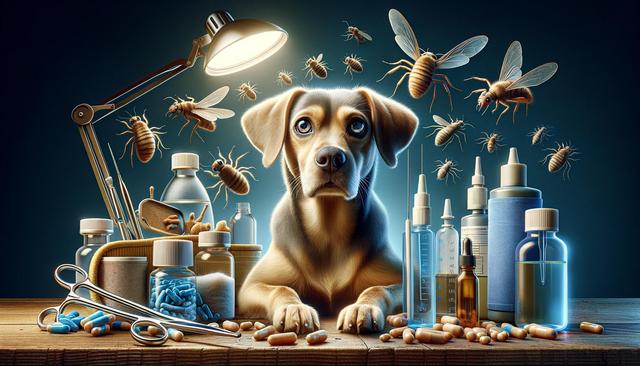
A Practical Guide to Keeping Your Dog Comfortable and Protected from Fleas
Understanding the Flea Life Cycle
Before you can effectively prevent flea infestations, it’s important to understand the life cycle of these pesky insects. Fleas typically go through four stages: egg, larva, pupa, and adult. This entire cycle can take anywhere from a few weeks to several months, depending on environmental conditions. Knowing these stages helps you to interrupt the flea life cycle at multiple points, making it easier to control and prevent infestations. Adult fleas are only a small fraction of the population; the rest are in various stages of development in your home. Regular cleaning and targeted treatments can significantly reduce their numbers.
Spotting Flea Infestations Early
Catching a flea problem early can make all the difference. Signs of infestation include excessive scratching, biting, or licking, particularly around the tail and groin. You might also notice flea dirt, which looks like specks of black pepper and is actually flea feces. To check for fleas, use a fine-toothed flea comb to part your dog’s fur and inspect the skin beneath. Fleas prefer warm, hidden areas, so pay attention to the armpits and groin. If you find evidence of fleas, immediate action is crucial to prevent the problem from escalating.
Effective Flea Treatment Options
There are several treatment options available to combat fleas, each with its own benefits. Topical treatments are applied directly to the skin and offer protection for several weeks. Oral medications are another option, providing systemic protection by killing fleas when they bite. Flea collars can offer long-term prevention and are ideal for dogs that spend a lot of time outdoors. Always consult with your veterinarian to choose a safe and effective treatment for your pet. It’s important to follow the product instructions carefully to ensure your dog receives the maximum benefit from the treatment.
Maintaining a Flea-Free Environment
Keeping your home flea-free is as crucial as treating your dog. Regular vacuuming can help remove fleas in various stages from carpets and upholstery. Wash your pet’s bedding frequently in hot water to kill any fleas or eggs present. Consider treating your home with flea sprays or powders, focusing on areas where your pet spends a lot of time. In addition to these steps, maintaining a clean yard by mowing the lawn and removing debris can reduce the likelihood of fleas latching onto your pet in the first place. Regular grooming sessions also help in early detection and prevention.
Natural Flea Prevention Methods
For those who prefer natural solutions, several options can help reduce flea populations. Essential oils like lavender and eucalyptus are known for their flea-repelling properties. However, these should be used with caution and never applied directly to your pet’s skin without veterinary guidance. Apple cider vinegar can be used as a rinse during baths to deter fleas. Additionally, diatomaceous earth is a natural powder that can be sprinkled around your home to dehydrate and kill fleas. Always ensure any natural remedies are safe for use around pets and humans.
Conclusion
By understanding the flea life cycle, spotting early signs of infestation, and using appropriate treatments, you can keep your dog comfortable and protected from fleas. A combination of effective treatments, maintaining a clean environment, and utilizing natural prevention methods can make all the difference in ensuring your pet remains healthy and happy. Regular monitoring and prompt action are key to preventing fleas from becoming a problem in the first place.